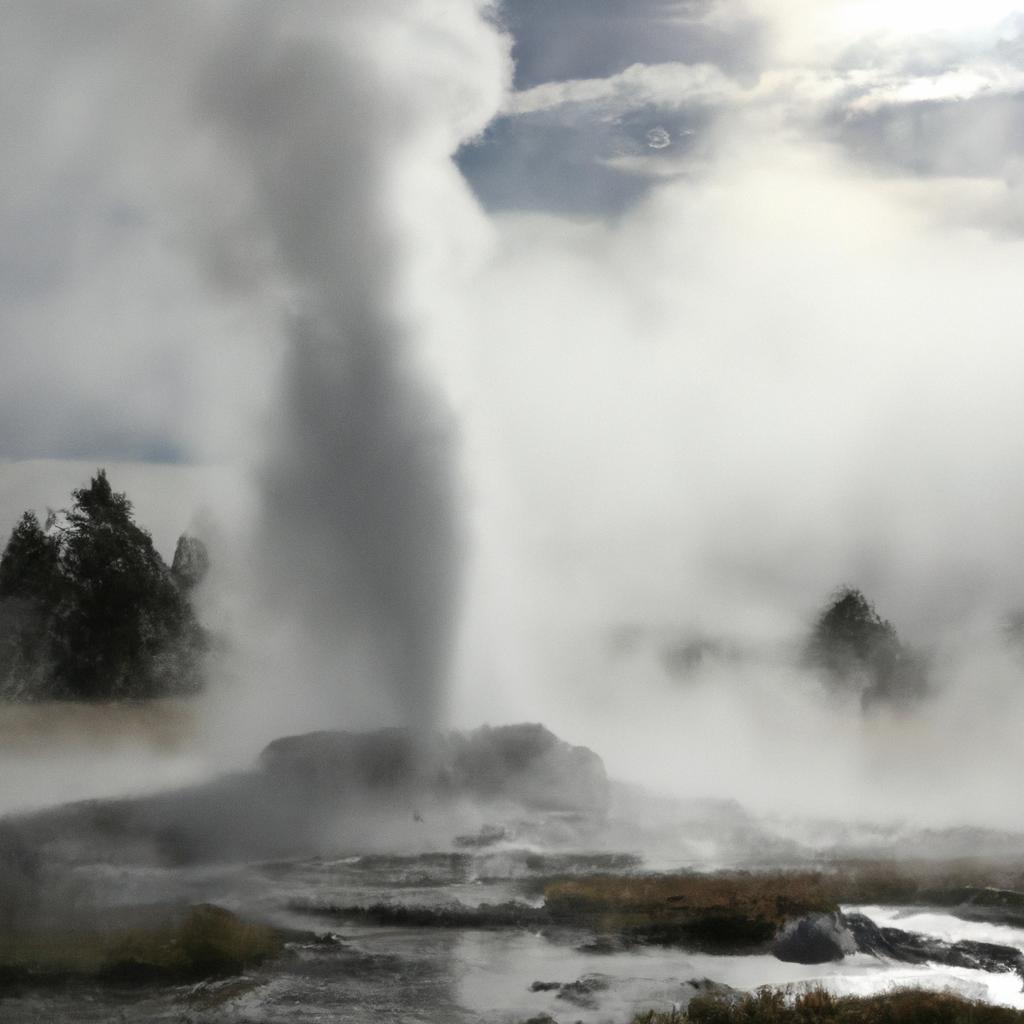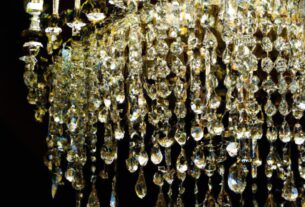Iceland is a land of enchanting beauty, attracting visitors from all corners of the globe with its awe-inspiring natural wonders. Among these captivating sights, geysers stand out as a truly mesmerizing phenomenon. Geysers are hot springs that erupt sporadically, shooting water and steam into the sky. In this article, I will take you on a journey to explore the geysers in Iceland, shedding light on their significance within the country’s tourism industry.
The Magnificence of Geysers in Iceland
For more than a century, geysers have been a major draw for tourists in Iceland. The legendary Great Geysir, which has been active since the 14th century, might not be as vibrant as it once was, but its neighboring geyser, Strokkur, continues to amaze visitors by erupting every 5-10 minutes and propelling water up to an astounding height of 40 meters. Other notable geysers worth visiting include the Geysir area in Haukadalur, the Hveravellir geothermal area, and the Reykjanes Peninsula.
Geysers and Iceland’s Tourism Industry
Not only are geysers a natural marvel, but they also play an essential role in Iceland’s tourism industry. Geothermal energy derived from these geysers is utilized for heating homes, generating electricity, and even nurturing crops. Geysers represent a vital part of Iceland’s sustainable energy system, offering a renewable and environmentally friendly source of power. Moreover, tourists flock to Iceland to witness the breathtaking eruptions and experience the unique geological features that the country has to offer.
Unraveling the Enigma: What Are Geysers?
Geysers are hot springs that intermittently erupt, expelling jets of water and steam into the atmosphere. The term “geyser” originates from the Icelandic word “geysir,” meaning “to gush.” These natural wonders form when water is heated by magma or hot rocks deep beneath the Earth’s surface. As the water heats up, it expands and rises, ultimately erupting powerfully at the surface.
The Unique Types of Geysers Found in Iceland
In Iceland, two main types of geysers exist: cone geysers and fountain geysers. Cone geysers are the more prevalent variety, emitting a single column of water and steam that can reach heights of up to 40 meters. On the other hand, fountain geysers erupt in a series of bursts, resembling a fountain-like display. Fountain geysers are rarer and mainly found in the Haukadalur geothermal area of Iceland.
Iceland’s geysers are distinct due to their association with geothermal energy. The country lies atop an Earth mantle hotspot, resulting in an abundance of geothermal energy that is harnessed for numerous purposes, including residential heating and electricity production. These geysers epitomize the natural manifestation of Iceland’s geothermal activity, forming an integral part of the nation’s natural heritage.
The Historical Accounts of Geysers in Iceland
Geysers have ingrained themselves within Icelandic culture and history for centuries. The earliest recorded mention of geysers in Iceland dates back to the 13th century Icelandic Sagas. However, it was not until the 18th century that the scientific community began to take a keen interest in these natural marvels.
The first scientific exploration of geysers in Iceland was conducted by the Danish scientist Olaus Wormius in 1636. Wormius provided a detailed description of the Great Geysir and its eruptions, significantly raising awareness about geysers in Iceland. Over the following two centuries, numerous scientists and explorers visited Iceland to study geysers, including Sir George Mackenzie, who embarked on a scientific expedition in 1810.
Memorable Eruptions: Significant Events in Geyser History
Throughout the centuries, Iceland’s geysers have been the site of notable eruptions. One such remarkable event occurred in 1294 when the Great Geysir unleashed a cataclysmic eruption, resulting in a devastating flood that destroyed numerous farms and claimed many lives. Another momentous eruption took place in 1845 when the Great Geysir erupted for multiple consecutive days, shooting water up to 80 meters into the sky.
In recent years, the activity of geysers in Iceland has been closely monitored. The eruption of Eyjafjallajökull in 2010, which disrupted air traffic across Europe, served as a vivid reminder of the tremendous power wielded by Iceland’s geological activity. While geysers may not pose the same level of danger as volcanoes, they are natural wonders that demand respect and caution.
Unveiling Iceland’s Finest: Best Geysers to Visit
If you plan a trip to Iceland, a visit to a geyser should be at the top of your itinerary. Iceland boasts a plethora of geysers, each with its distinct features and allure. Allow me to highlight some of the most captivating geysers that Iceland has to offer and delve into what makes them truly exceptional.
Geysir Area in Haukadalur
The Geysir area in Haukadalur stands as an immensely popular tourist destination in Iceland. It is home to the Great Geysir, regarded as the world’s oldest known geyser. Though it may not be as active as before, the Great Geysir sporadically erupts, providing visitors with a glimpse of its former grandeur. However, Strokkur steals the spotlight in Haukadalur as it erupts every 5-10 minutes, launching water up to an astonishing height of 40 meters. Witnessing this awe-inspiring spectacle is an experience you won’t want to miss.
Hveravellir Geothermal Area
Situated in the highlands of Iceland, the Hveravellir geothermal area offers visitors a unique experience. Here, you will encounter geysers, hot springs, and fumaroles surrounded by breathtaking natural landscapes. The most famous geyser in Hveravellir is the Gljúfrabúi geyser, erupting approximately every 5 minutes. However, what sets the Hveravellir geothermal area apart is its remote location, providing a tranquil and relaxing environment in which to appreciate Iceland’s natural beauty.
Reykjanes Peninsula
The Reykjanes Peninsula is home to some of Iceland’s most extraordinary geysers. The Gunnuhver geyser, for instance, is a bubbling mud pool that emits steam, creating an otherworldly and surreal ambiance. The peninsula is also renowned for several hot springs, including the popular Blue Lagoon, known for its healing properties. The Reykjanes Peninsula presents an excellent choice for visitors seeking to explore Iceland’s geothermal wonders while relishing the stunning scenery.
In conclusion, Iceland’s geysers offer a unique and unforgettable experience. Whether you choose to visit the Geysir area in Haukadalur, the Hveravellir geothermal area, or the Reykjanes Peninsula, you are certain to be astounded by the sheer power and beauty of these natural wonders. Each geyser possesses its distinct features and allure, making every visit a worthwhile adventure.
Harnessing Geothermal Energy from Geysers in Iceland
Geysers in Iceland offer more than just beauty and entertainment – they serve as an abundant source of geothermal energy, which Iceland has been harnessing for decades. In this section, we will delve into how geysers are used for geothermal energy in Iceland, exploring the advantages and disadvantages associated with this method.
The Utilization of Geysers for Geothermal Energy
Geothermal energy is derived from the natural heat of the Earth. In Iceland, this energy is harnessed by drilling deep into the Earth’s surface to access hot water and steam reserves. Geysers play a vital role in this process, serving as a source of both hot water and steam. Once brought to the surface, the hot water and steam are employed for heating homes, generating electricity, and even facilitating crop growth.
Iceland’s utilization of geothermal energy is impressive, with over 90% of homes in the country being heated by geothermal sources. Moreover, the country boasts several geothermal power plants, including the Hellisheidi Power Station, the largest geothermal power plant in the world.
Advantages of Utilizing Geysers for Geothermal Energy
Utilizing geysers for geothermal energy presents numerous advantages. Firstly, geothermal energy is a renewable and sustainable source of power, ensuring that it will not deplete over time. Additionally, geothermal energy emits no harmful emissions into the atmosphere, contributing to a cleaner and greener environment. Furthermore, geothermal energy is relatively cost-effective, potentially leading to savings for consumers on their energy bills.
Another significant advantage lies in the potential job creation and economic growth associated with geothermal energy. The geothermal industry in Iceland has generated thousands of jobs and has contributed to the country’s sustainable economic development.
Disadvantages of Utilizing Geysers for Geothermal Energy
While geothermal energy boasts numerous advantages, several disadvantages accompany the utilization of geysers for this purpose. One prominent drawback is the expense associated with constructing and maintaining geothermal power plants. Additionally, drilling deep into the Earth’s surface can be time-consuming and may result in potential environmental damage.
To conclude, geysers in Iceland represent not only a natural wonder but also a valuable source of geothermal energy. They serve as a renewable and sustainable energy source, offering numerous advantages, including cost-effectiveness, job creation, and environmental friendliness. However, it is important to acknowledge the potential disadvantages, such as high costs and environmental risks, that come with harnessing geothermal energy from geysers.
Experience the Extravaganza: Visit Iceland’s Geysers
In conclusion, a journey through Iceland’s geysers is an experience you will cherish forever. From the moment you witness the first eruption, you will be enchanted by the sheer power and beauty of nature. Iceland’s geysers are not just remarkable natural wonders but are crucial elements shaping the country’s sustainable energy future.
By bearing witness to the eruptions and immersing yourself in the hot springs, you will embrace the thrill of experiencing geothermal energy firsthand. These geysers have enticed visitors for over a century, capturing their imaginations with their extraordinary eruptions and showcasing Iceland’s exceptional geology and natural allure.
As you plan your visit to Iceland, take the time to appreciate the multitude of wonders this country offers, with geysers being just one of the many marvels awaiting you. Therefore, when embarking on your Icelandic adventure, ensure that visiting the geysers stands at the top of your itinerary. Embrace the awe-inspiring eruptions, bathe in the rejuvenating hot springs, and discover the significance of geothermal energy in Iceland.
At TooLacks, we dedicate ourselves to providing informative and captivating content covering nature, gardening, and animals. We hope that this article has ignited your curiosity and inspired you to explore Iceland’s geysers while gaining a deeper understanding of this extraordinary natural phenomenon. So pack your bags, embark on this adventure, and prepare to be spellbound by Iceland’s geysers and their captivating allure.



